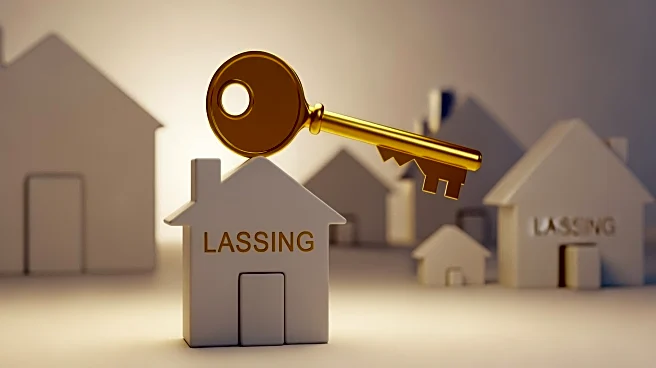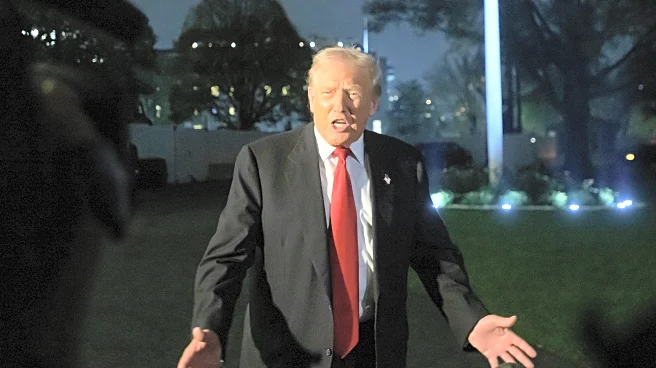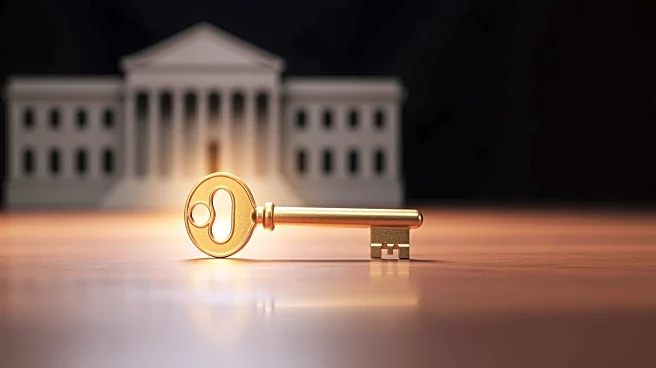What's Happening?
The White House economic adviser, Kevin Hassett, has projected that the U.S. economy will return to a growth rate of 3% to 4% by the first quarter of 2026. This forecast comes after the government shutdown,
which is estimated to have reduced growth rates by 1 to 1.5 percentage points. Despite challenges such as weaker growth in consumption, global trade, slow job growth, higher unemployment, and persistent inflation, surging business investment is expected to offset these issues. A survey by the National Association for Business Economics indicated that President Trump's tariffs might reduce economic growth by up to half a percentage point, with a median projection of 1.8% growth in 2025.
Why It's Important?
The anticipated recovery in economic growth is significant for U.S. industries and public policy, as it suggests a potential rebound from the adverse effects of the government shutdown. The focus on business investment as a key offset highlights the importance of corporate activities in driving economic recovery. The impact of tariffs on growth underscores the ongoing debate about trade policies and their effects on the economy. Stakeholders such as businesses and policymakers will need to navigate these challenges to ensure sustainable growth.
What's Next?
The White House is working on addressing affordability issues and boosting purchasing power, which fell during the previous administration. Plans to pay dividends to lower- and middle-income Americans and introduce a 50-year mortgage are being considered to improve economic conditions. These measures, along with higher tax revenues, could support economic recovery and stability.
Beyond the Headlines
The focus on housing affordability and consumer purchasing power reflects broader socio-economic challenges that the administration aims to tackle. The introduction of long-term mortgages and dividend payments could have lasting impacts on the housing market and consumer spending patterns.













